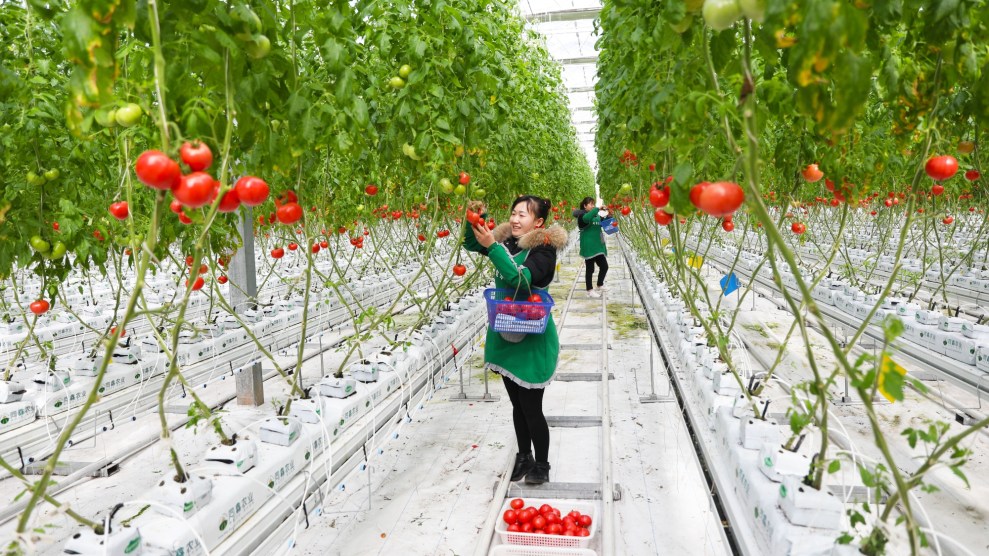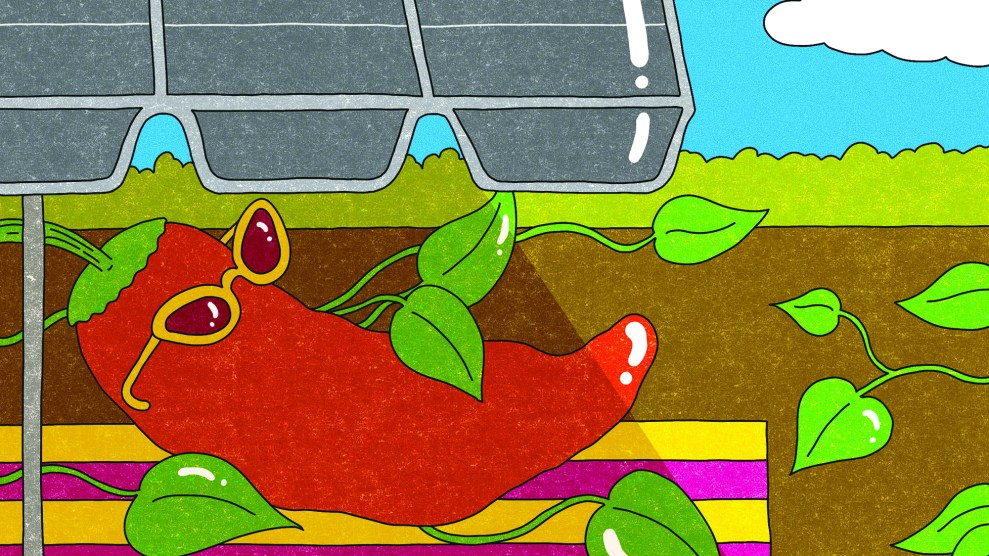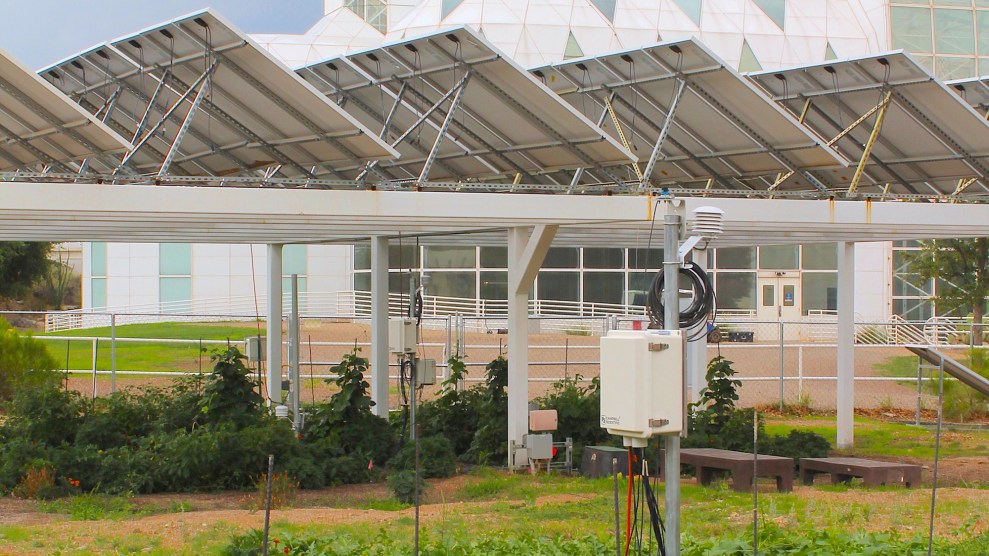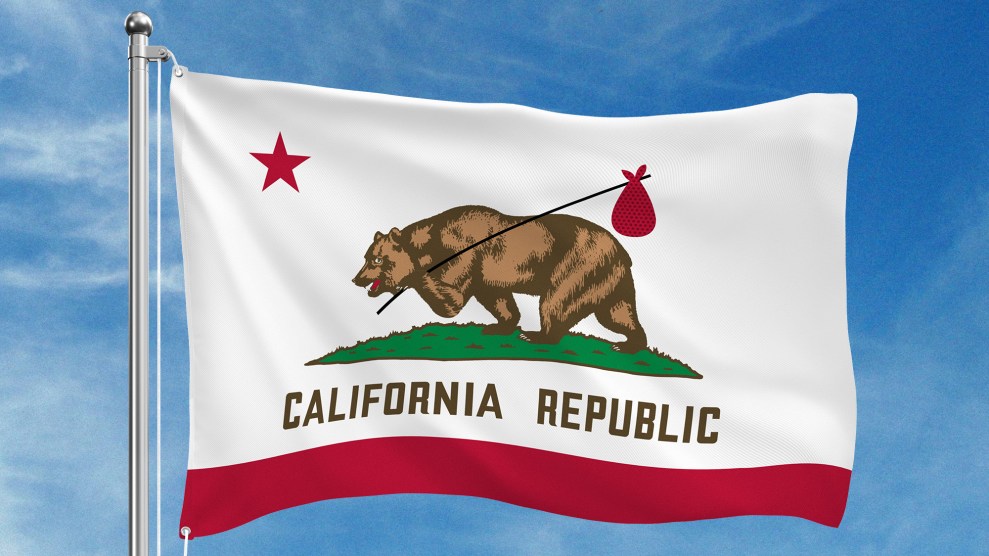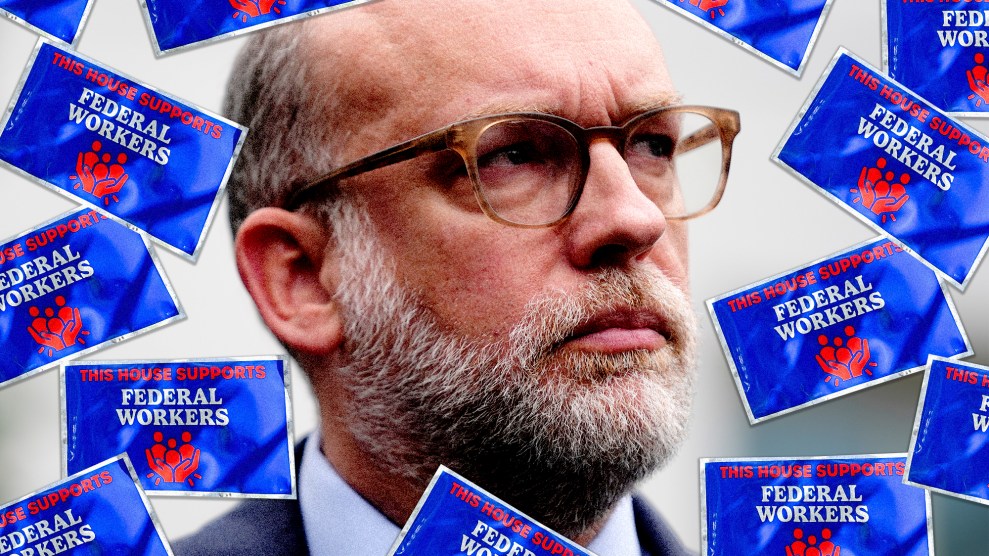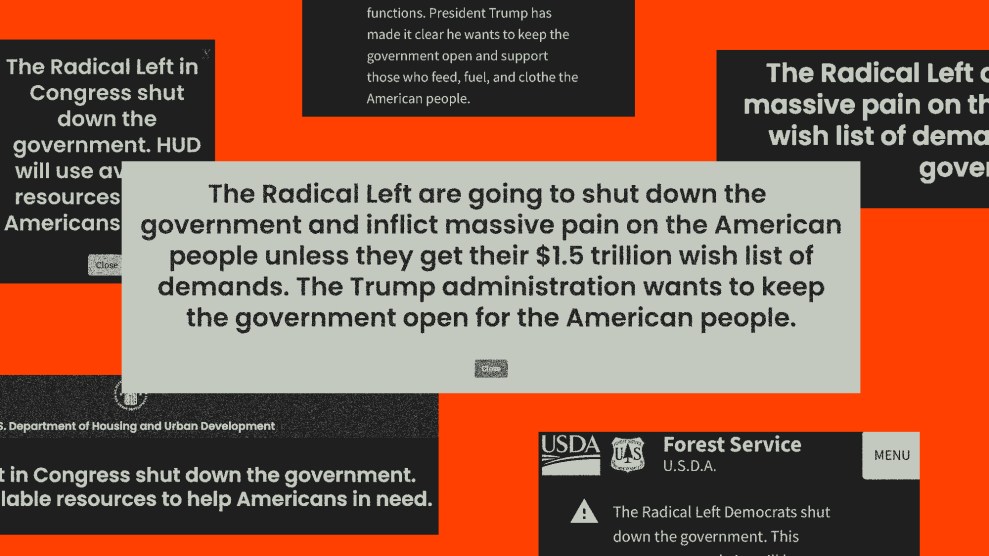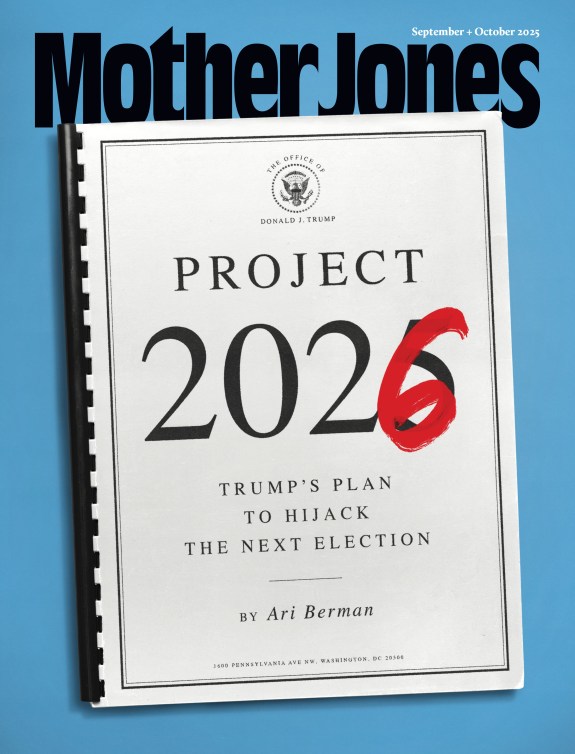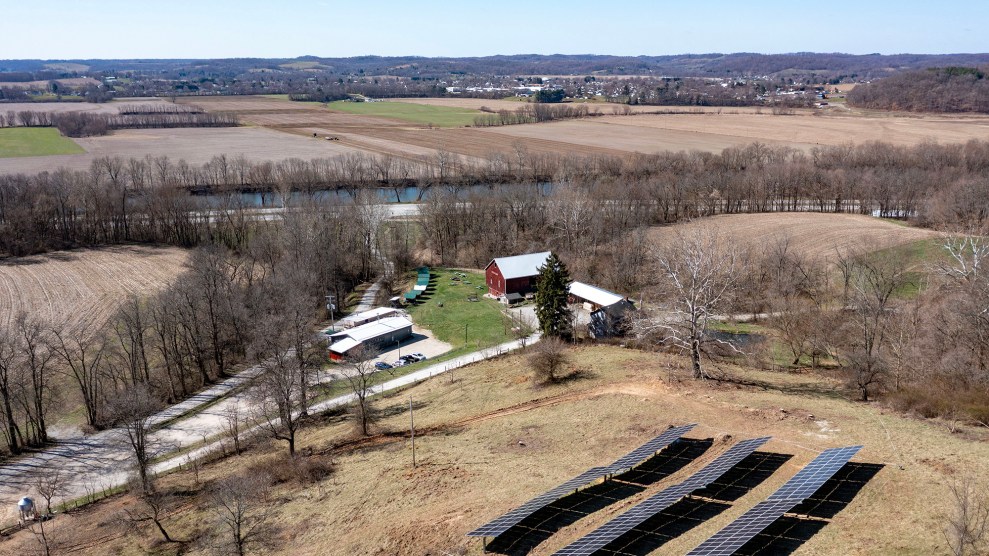
Solar panels installed as part of the Rural Energy for America Program at the Wooly Pig Farm Brewery in Fresno, Ohio.Jim West/UCG/Universal Images Group/Getty
This story was originally published by Inside Climate News and is reproduced here as part of the Climate Desk collaboration.
The US Department of Agriculture announced this week that it will stop funding wind and solar energy on American farmland, a move that continues the Trump administration’s attempts to kill incentives for renewables while it boosts support for fossil fuels and land-hungry, energy inefficient biofuels.
At the state fairgrounds in Lebanon, Tennessee, Agriculture Secretary Brooke Rollins said Monday that the agency will no longer allow “businesses to use your taxpayer dollars to fund solar projects on prime American farmland, and we will no longer allow solar panels manufactured by foreign adversaries to be used in our USDA-funded projects.”
The move is part of a broader effort by the administration to revoke or reduce Biden-era funding for the expansion of wind and solar through the Inflation Reduction Act, much of which benefited farmers and agricultural areas.
In July, President Donald Trump signed into law the One Big Beautiful Bill Act, slashing incentives for wind and solar while boosting support for biofuels, which consume the majority of the country’s cropland. The bill also restricts the use of Chinese-made solar components, a directive echoed in Rollins’ comments this week.
The USDA formally announced the wind and solar funding cuts on Tuesday. It did not respond to specific questions from Inside Climate News.
The agency and lawmakers supporting the move said their primary concern was safeguarding the country’s farmland and food. “Secretary Rollins understands that food security is national security, and preserving prime farmland for agricultural production is a key component of protecting our food supply,” said Glenn “GT” Thompson (R-Penn.), chairman of the House Committee on Agriculture, in a statement.
“It’s a step backwards for farmers and small businesses that are trying to make decisions that are good for the business and the environment.”
More than half the country’s cropland—178 million out of 328 million crop acres—is used to grow corn and soybeans, much of it for biofuels, not food. About one-third of the acres planted in corn are used for corn-based ethanol, which amounts to about 4 percent of the country’s fuel mix. More than 40 percent of the soybean supply is used for biofuels, despite biodiesel amounting to less than 1 percent of the fuel mix.
Most of the remaining corn and soy is fed to confined livestock, which are a major source of greenhouse gas emissions. Only about 2 percent of the country’s corn is used for direct human consumption.
“Tennessee farmland should be used to grow the crops that feed our state and country, not to house solar panels made by foreign countries like Communist China,” said Sen. Marsha Blackburn (R-Tenn.). “Secretary Rollins and President Trump are right to put an end to these Green New Deal subsidies that waste taxpayer dollars while threatening America’s food security. I applaud this administration for investing in rural communities across Tennessee and empowering them to prosper for years to come.”
The biggest agricultural land users in Tennessee are corn and soybeans, which are grown on about 2.5 million acres. A state commission found in 2024 that solar development did not threaten the state’s farmland.
The USDA said it would immediately disqualify wind and solar projects from its Rural Development Business and Industry Guaranteed Loan Program and disqualify any wind or solar systems that are not “right-sized for their facilities” from a loan program under the Rural Energy for America Program (REAP).
Earlier this year, the agency stopped distributing already promised REAP grants, prompting farmers to sue the administration.
The administration’s latest move could complicate the economic landscape for farmers, who have increasingly relied on the income from wind and solar installations on their land as commodity prices have fallen and climate-driven weather extremes threaten production.
In Iowa—the nation’s biggest corn-producing state—wind provides about 60 percent of electricity. “This is such a popular program—it saves them money and gives them a potential financial source,” said Richa Patel, a policy specialist at the National Sustainable Agriculture Coalition. “It’s a step backwards for farmers and small businesses that are trying to make decisions that are good for the business and the environment.”
Patel said she and her colleagues were still digging into the specifics about what the new limitations might mean and what type of solar facilities they will apply to.
In its statement Tuesday, the USDA said the number of solar panels on farmland has increased by nearly 50 percent since 2021. “That is why the Department is taking action,” the statement said.
A 2024 analysis by the USDA found that about 424,000 acres were used for wind and solar, about 0.05 percent of the 897 million total pasture, rangeland, and crop acres in the country.
The agency also found that agricultural land usually maintained similar characteristics and could still be used as farmland “even after the addition of solar or wind development.”

